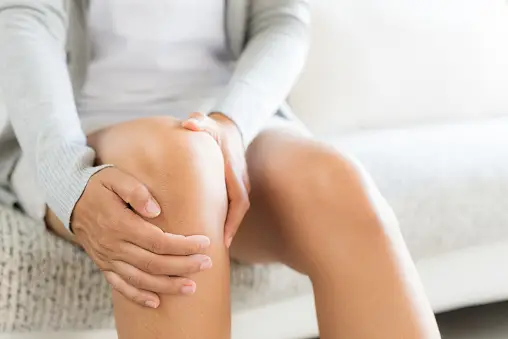Arthrtitis is a common condition with many of those who have it being unsure as to what it really is. If you have arthritis, having a good understanding of the condition is vital and can help you better manage it. Here we share some information on what arthritis is and what to do about it.
What is it?
Arthritis isn’t a single condition but rather a name given to a group of conditions affecting your joints. Arthritis is a progressive condition that leads to permanent joint changes that affects all ages, races and sexes equally. Conditions can vary from mild to severe and can have varying degrees of limitations on someone’s livelihood. Common reported symptoms of arthritis include pain, stiffness, swelling, reduced mobility/range of movement and reduced strength or function.
There are several types of arthritis:
Osteoarthritis (OA)
OA is the most common form and is a disease that affects the whole joint, not just ‘wear and tear’ of the cartilage as previously thought.
OA has several sub-types:
- Post-traumatic such as after a fracture or major ligament injury.
- Work-related OA from demanding jobs with repetitive heavy loading like construction work.
- Lifestyle factors such as poor diet, being overweight and not exercising regularly.
The chance of developing OA does increase with age but it is not an ‘old persons disease’. It is possible to preserve your joint health as you get older by staying active, eating well and maintaining a healthy bodyweight. These 3 factors prove incredibly useful to those with mild to moderate OA.
Autoimmune Inflammatory arthritis
Autoimmune (AI) conditions are when the body’s own immune system attacks or targets its own body cells and tissues. This happens when the immune system struggles to distinguish between attacking a foreign body and its own tissues, attacking its own tissues rather than protecting it. When this response targets your joints it results in Autoimmune inflammatory arthritis.
Rheumatoid Arthritis (RA) is the most common, with lesser types being psoriatic or juvenile arthritis.
Recent research has shown a link between the balance of healthy microbiomes in our gut and the regulation of our immune response. This means that an unhealthy balance in our gut may be a trigger for inflammatory conditions like RA.
AI arthritis has periods of flare ups and periods of remission, and are best managed with an action plan that caters to the ups and downs. A combination of medication and a healthy active lifestyle (including good sleep and lowered stress levels) are most effective.
Infectious arthritis
Infectious arthritis is caused by a bacterial, viral or fungal infection elsewhere in the body that triggers an inflammatory/infectious response within the joint. Infectious arthritis is best managed with anti-viral, anti-bacterial or anti-fungal medications and usually resolves fairly quickly.
Gout (metabolic arthritis)
Gout develops from a build up of uric acid crystals in the body. These crystals arise from the breakdown of certain types of foods such as red meat, seafood and alcohol. If the body can’t sufficiently rid itself of the uric acid crystals it may build up (within a joint) and cause pain and limited movement. Gout most commonly targets the big toe.
Some people are more susceptible to the build up of uric acid crystals than others. Gout is best managed by lowering the number of triggering food or drinks in your diet or taking prescribed medication that controls the amount of uric acid crystals in the blood.
How do I know if I have it?
To obtain an accurate diagnosis on what may be causing your joint pain, we recommend consulting a health care practitioner such as a Physio or GP.
You can access our online booking system here if you’d like to book a session in with one of our expert team.
What does it mean for me if I do have it?
Permanent changes in your joint structure as a result of arthritis does not mean that you have to live with permanent restrictions in your day to day life. There are means to modify and adapt things you are doing so they feel more comfortable.
There are many tools available to help you manage your pain and unpleasant symptoms as well as preserving your joint health. Understanding your condition, prioritising physical activity, and maintaining a healthy weight are 3 essential components of this positive action plan.
If you feel unsure on next steps to take, we’d recommend contacting your local Physio or GP. A health care professional can assist you with creating a well-balanced management plan. They can too help guide you on ways to build your confidence when it comes to moving your body.
The Arthritis Foundation have developed a wonderful ebook for you to read more on the topic.
